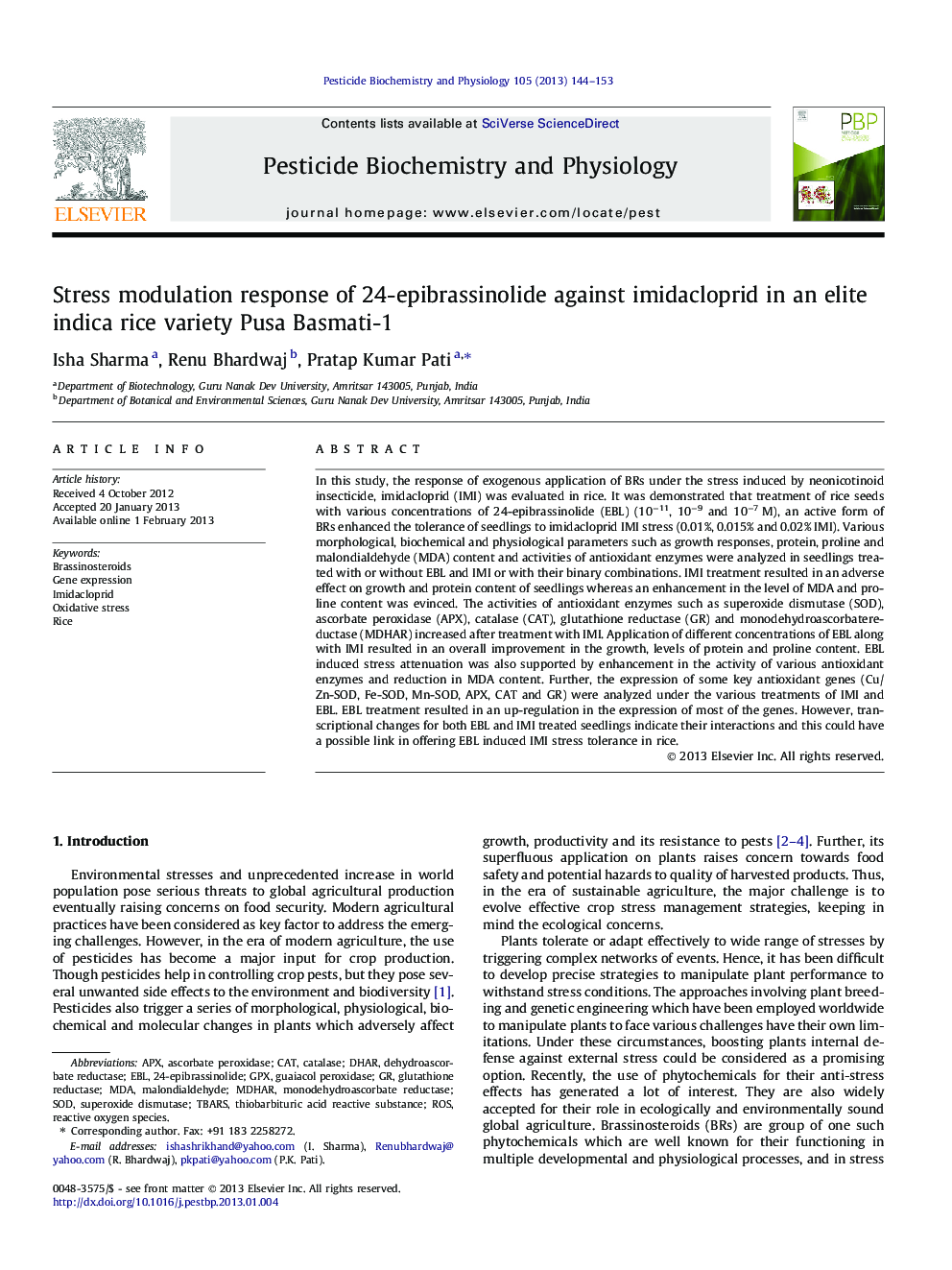| Article ID | Journal | Published Year | Pages | File Type |
|---|---|---|---|---|
| 2009440 | Pesticide Biochemistry and Physiology | 2013 | 10 Pages |
In this study, the response of exogenous application of BRs under the stress induced by neonicotinoid insecticide, imidacloprid (IMI) was evaluated in rice. It was demonstrated that treatment of rice seeds with various concentrations of 24-epibrassinolide (EBL) (10−11, 10−9 and 10−7 M), an active form of BRs enhanced the tolerance of seedlings to imidacloprid IMI stress (0.01%, 0.015% and 0.02% IMI). Various morphological, biochemical and physiological parameters such as growth responses, protein, proline and malondialdehyde (MDA) content and activities of antioxidant enzymes were analyzed in seedlings treated with or without EBL and IMI or with their binary combinations. IMI treatment resulted in an adverse effect on growth and protein content of seedlings whereas an enhancement in the level of MDA and proline content was evinced. The activities of antioxidant enzymes such as superoxide dismutase (SOD), ascorbate peroxidase (APX), catalase (CAT), glutathione reductase (GR) and monodehydroascorbatereductase (MDHAR) increased after treatment with IMI. Application of different concentrations of EBL along with IMI resulted in an overall improvement in the growth, levels of protein and proline content. EBL induced stress attenuation was also supported by enhancement in the activity of various antioxidant enzymes and reduction in MDA content. Further, the expression of some key antioxidant genes (Cu/Zn-SOD, Fe-SOD, Mn-SOD, APX, CAT and GR) were analyzed under the various treatments of IMI and EBL. EBL treatment resulted in an up-regulation in the expression of most of the genes. However, transcriptional changes for both EBL and IMI treated seedlings indicate their interactions and this could have a possible link in offering EBL induced IMI stress tolerance in rice.
Graphical abstractFigure optionsDownload full-size imageDownload as PowerPoint slideHighlights► Use of EBL as an alternative strategy for curbing ill effect of pesticide on the plants. ► Analysis of key stress markers upon exogenous application of EBL (24-epibrassinolide) under imidacloprid stress. ► Analysis of antioxidant genes expression provides insights into the interaction of BRs and IMI. ► Distinct role of Cu/Zn-SOD, Fe-SOD and CAT in protection against pesticide stress observed.
